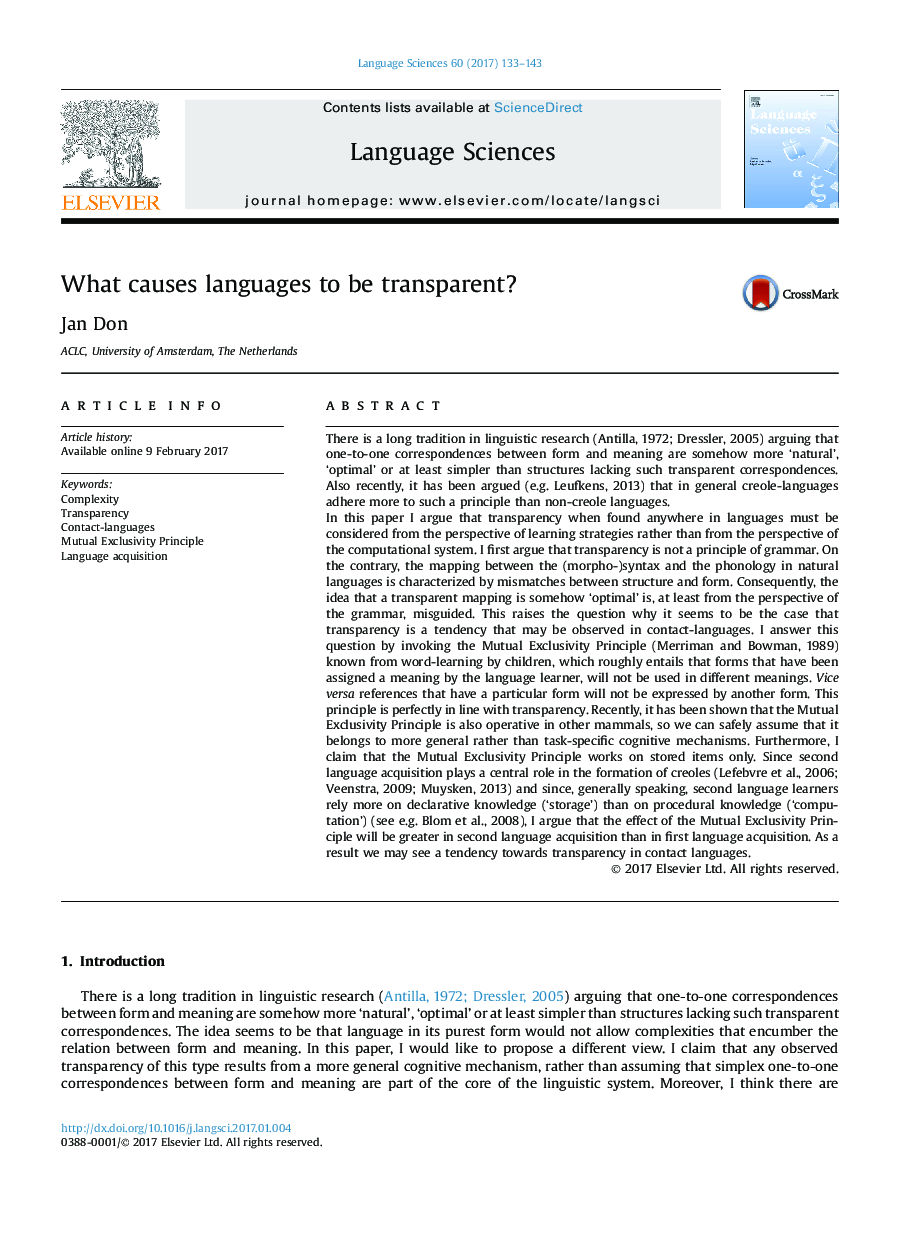| کد مقاله | کد نشریه | سال انتشار | مقاله انگلیسی | نسخه تمام متن |
|---|---|---|---|---|
| 5124567 | 1488143 | 2017 | 11 صفحه PDF | دانلود رایگان |
- Language complexity should be considered from the perspective of language learner.
- Transparency is not a property of UG, but results from the Mutual Exclusivity Principle.
- The observed transparency of creole-languages results from the influence of L2-learners.
There is a long tradition in linguistic research (Antilla, 1972; Dressler, 2005) arguing that one-to-one correspondences between form and meaning are somehow more 'natural', 'optimal' or at least simpler than structures lacking such transparent correspondences. Also recently, it has been argued (e.g. Leufkens, 2013) that in general creole-languages adhere more to such a principle than non-creole languages.In this paper I argue that transparency when found anywhere in languages must be considered from the perspective of learning strategies rather than from the perspective of the computational system. I first argue that transparency is not a principle of grammar. On the contrary, the mapping between the (morpho-)syntax and the phonology in natural languages is characterized by mismatches between structure and form. Consequently, the idea that a transparent mapping is somehow 'optimal' is, at least from the perspective of the grammar, misguided. This raises the question why it seems to be the case that transparency is a tendency that may be observed in contact-languages. I answer this question by invoking the Mutual Exclusivity Principle (Merriman and Bowman, 1989) known from word-learning by children, which roughly entails that forms that have been assigned a meaning by the language learner, will not be used in different meanings. Vice versa references that have a particular form will not be expressed by another form. This principle is perfectly in line with transparency. Recently, it has been shown that the Mutual Exclusivity Principle is also operative in other mammals, so we can safely assume that it belongs to more general rather than task-specific cognitive mechanisms. Furthermore, I claim that the Mutual Exclusivity Principle works on stored items only. Since second language acquisition plays a central role in the formation of creoles (Lefebvre et al., 2006; Veenstra, 2009; Muysken, 2013) and since, generally speaking, second language learners rely more on declarative knowledge ('storage') than on procedural knowledge ('computation') (see e.g. Blom et al., 2008), I argue that the effect of the Mutual Exclusivity Principle will be greater in second language acquisition than in first language acquisition. As a result we may see a tendency towards transparency in contact languages.
Journal: Language Sciences - Volume 60, March 2017, Pages 133-143
